8 Zen Garden Design Ideas That Will Bring Tranquility to Your Home
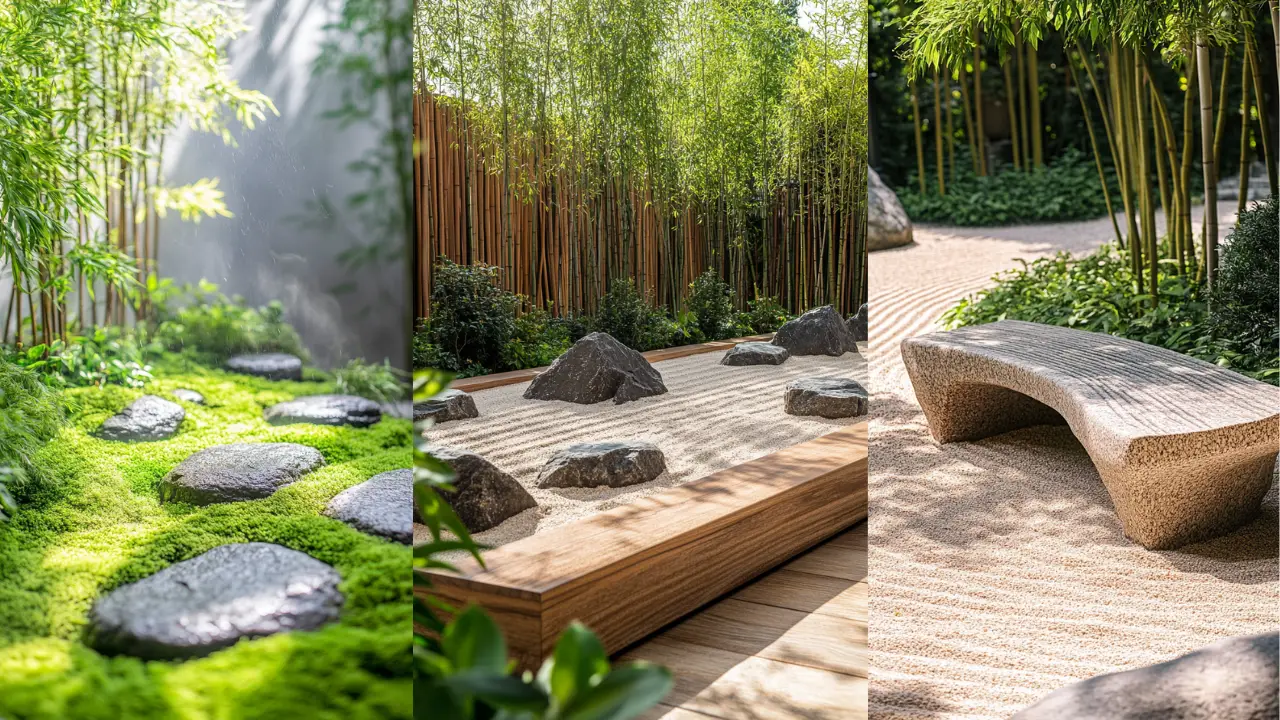
Zen gardens are a perfect blend of peace and simplicity, offering minimalist spaces that promote mindfulness and relaxation. Rooted in ancient Japanese culture, these gardens were designed to encourage meditation and focus. Their calming presence comes from carefully arranged elements like sand, rocks, and plants, symbolizing nature’s balance. Bringing a Zen garden into your home can create a serene escape from daily stress, whether placed in your backyard or a quiet indoor corner. In this article, you’ll discover 8 inspiring Zen garden design ideas to help you craft your oasis of tranquility.
Idea 1: Traditional Japanese Rock Garden (Karesansui)
A traditional Japanese rock garden, or Karesansui, is a dry landscape that represents nature through minimal elements like rocks, gravel, and sand. The gravel symbolizes water, while the rocks stand in for mountains, creating a serene and symbolic environment.
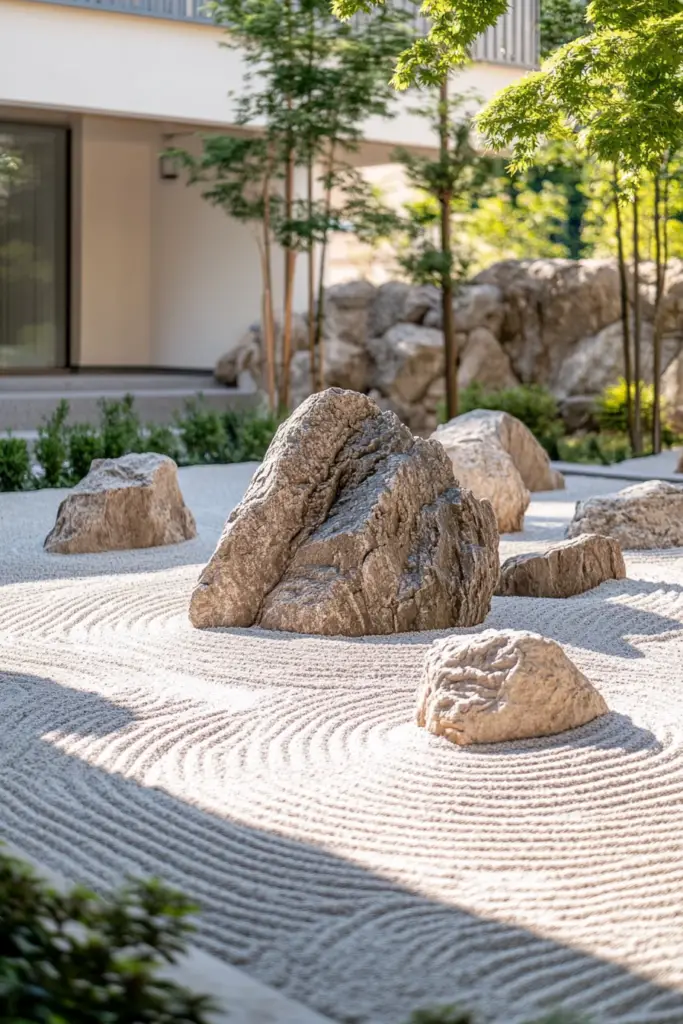
Designing Tips:
Choose fine, light-colored gravel to mimic the appearance of flowing water. Arrange rocks in small clusters, balancing larger and smaller stones to represent islands or mountain peaks. Use a rake to carefully form ripples in the gravel, simulating the movement of water. The key is in the simplicity and precision of your design.
Best Placement:
A Karesansui garden is perfect for outdoor spaces, patios, or small courtyards where you can create a dedicated area for peaceful reflection. Its minimalist style suits compact areas, making it easy to maintain while still delivering a tranquil atmosphere.
Idea 2: Moss Garden Zen Design
A moss garden focuses on soft, green moss as the main element, creating a peaceful, natural ambiance. The lush moss brings a gentle, calming feel to the space, perfect for those seeking a connection with nature.
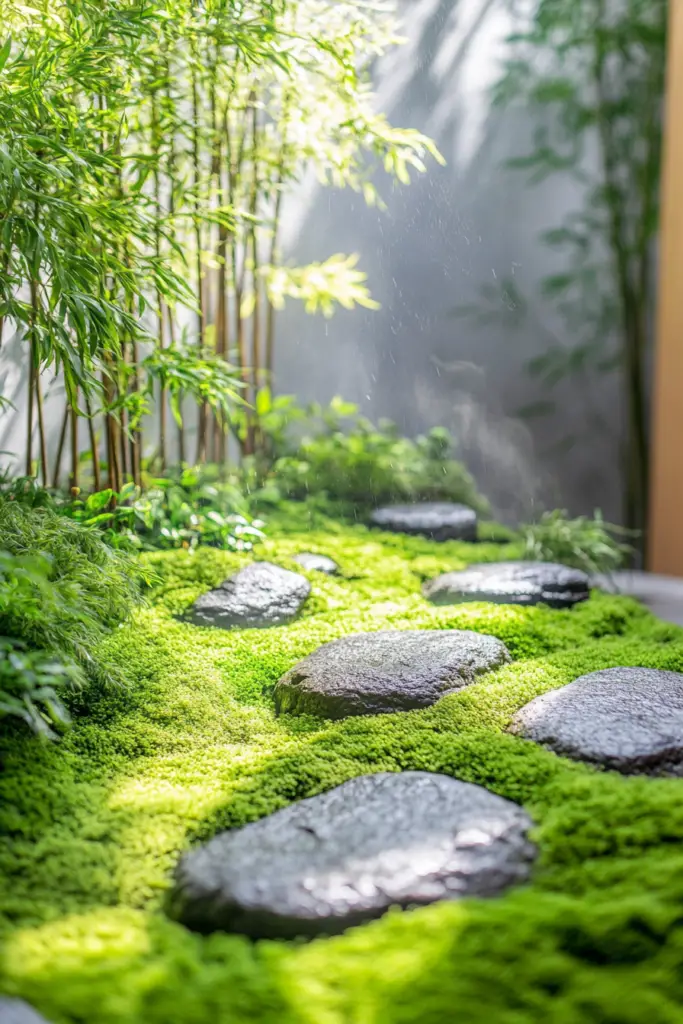
Designing Tips:
Choose a shade-tolerant moss variety like cushion or sheet moss. These types thrive in low-light areas and provide a rich, green carpet. Combine moss with smooth stones for contrast or bamboo for a simple, elegant look. Keep the moss moist by misting it regularly, and make sure the area has good air circulation to prevent mold.
Benefits:
Moss gardens are low-maintenance, making them ideal for people who want a natural touch without the hassle. They thrive in small spaces, and their vibrant greenery adds life and tranquility to any corner of your home or outdoor area.
Idea 3: Water Feature-Inspired Zen Garden
A water feature adds the soothing sound of flowing water to your Zen garden, enhancing its tranquil atmosphere. Whether it’s a small pond, a fountain, or a simple water basin, the gentle movement of water promotes calm and mindfulness.
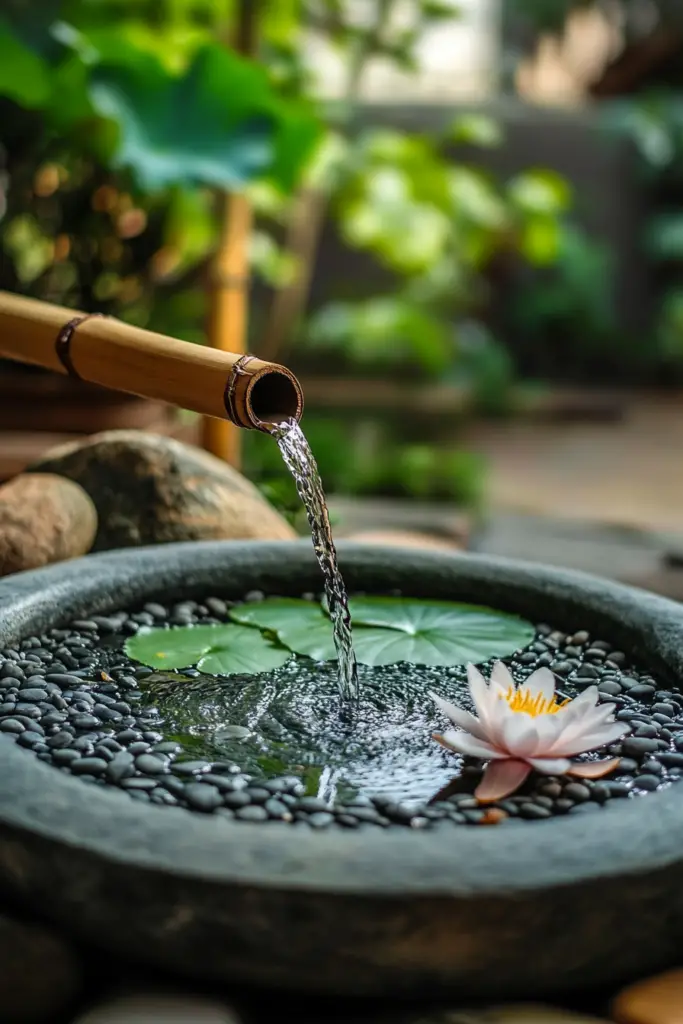
Designing Tips:
Consider adding bamboo water spouts for a traditional touch, or opt for a stone basin to keep the design minimal. Place the water feature in a quiet corner, away from high-traffic areas, to maintain its peaceful effect. Ensure the water stays clear by regularly cleaning the basin and using natural filters or aquatic plants to keep it fresh.
Benefits:
The calming effect of water brings an added layer of serenity to your garden, perfect for meditation or quiet reflection. Its soft sounds help reduce stress, making the garden a peaceful retreat from everyday life.
Idea 4: Zen Garden with Bamboo Accents
Bamboo brings a natural, minimalist aesthetic to any Zen garden, adding an organic element that enhances its serene feel. Whether using bamboo plants or fencing, this versatile material blends effortlessly with traditional Zen design.
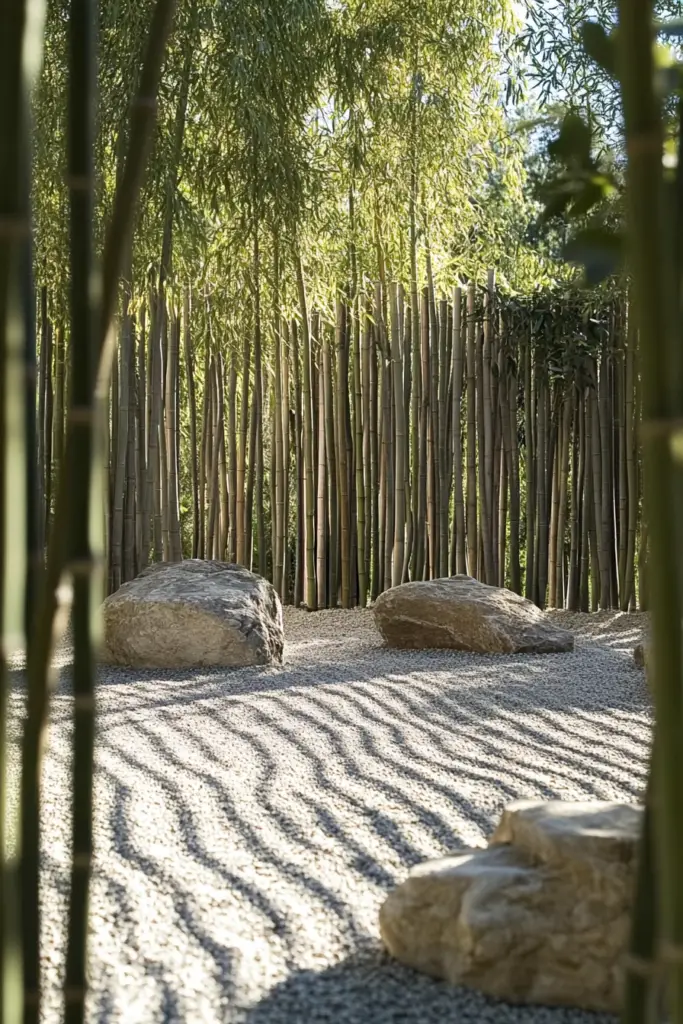
Designing Tips:
Incorporate bamboo as a focal point by planting it in clusters or using it as a backdrop behind rocks and gravel. Bamboo fencing can also create a natural boundary around the garden, adding privacy while maintaining a simple, uncluttered look. Pair bamboo with smooth stones and raked gravel to balance its vertical structure with horizontal elements.
Benefits:
Bamboo adds height and structure to your Zen garden without overwhelming the space. Its clean lines and natural texture enhance the garden’s peaceful, minimalist design, offering an elegant way to bring nature into your retreat.
Idea 5: Stone Pathway Zen Garden
A stone or stepping-stone pathway adds a contemplative element to your Zen garden, inviting peaceful, mindful walks. This simple design encourages quiet reflection as you move through the space.
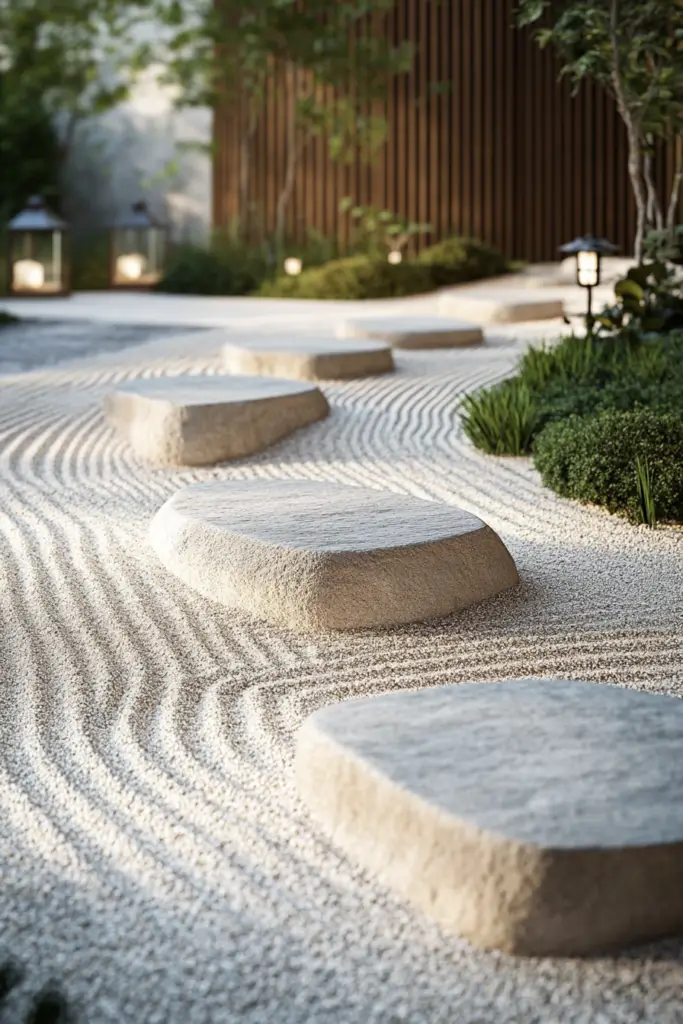
Designing Tips:
Use smooth stones or stepping slabs that feel comfortable underfoot. Place them over gravel or sand, arranging them in a gentle, flowing pattern to create a calm walking path. Ensure the spacing allows for slow, deliberate steps, enhancing the meditative experience.
Benefits:
A stone pathway brings structure to a larger Zen garden while promoting mindful walking. It also helps guide the eye through the garden’s design, offering a serene journey that aligns with the garden’s tranquil purpose.
Idea 6: Zen Garden with Sculptural Elements
Adding statues or stone sculptures like Buddha figures, lanterns, or pagodas can elevate the spiritual and artistic feel of your Zen garden. These elements bring a deeper sense of purpose and beauty to the space.
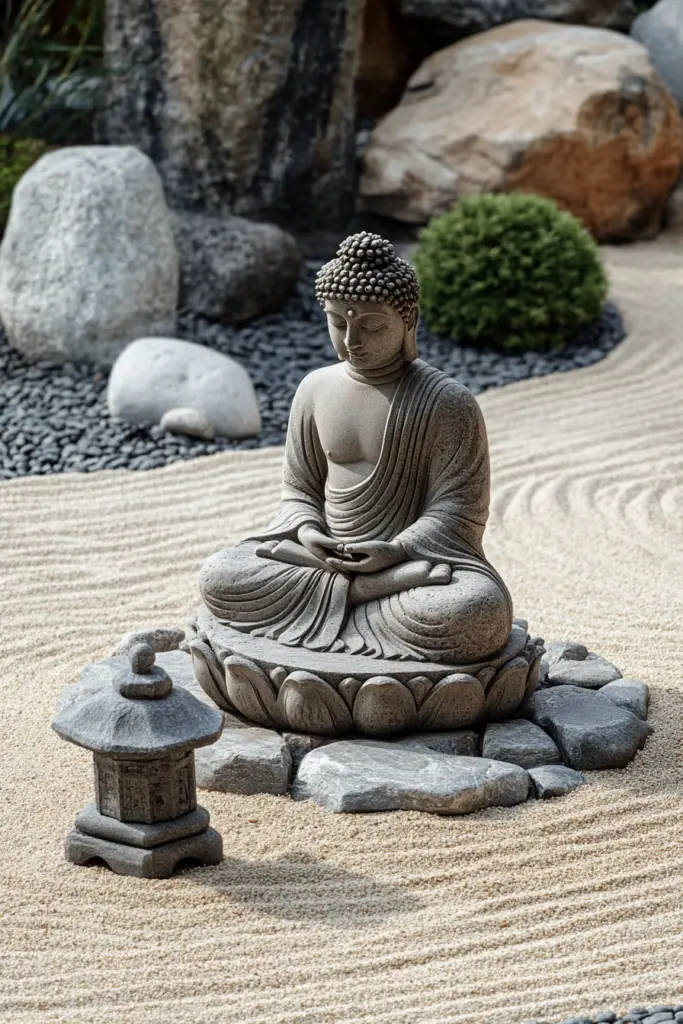
Designing Tips:
Choose sculptures that are subtle and harmonious with the natural surroundings. Opt for weathered stone or earthy tones that blend with rocks, gravel, and plants. Place them thoughtfully so they enhance the garden without overwhelming it, such as a Buddha statue at a focal point or a lantern nestled among greenery.
Benefits:
Sculptural elements provide a peaceful focal point for meditation and contemplation. They also add visual interest, making the garden a more immersive and meaningful experience.
Idea 7: Raised Bed Zen Garden
A raised bed Zen garden uses a bordered space to create clear boundaries, helping organize elements like sand, gravel, and plants. This design brings structure while maintaining the calm simplicity of a traditional Zen garden.
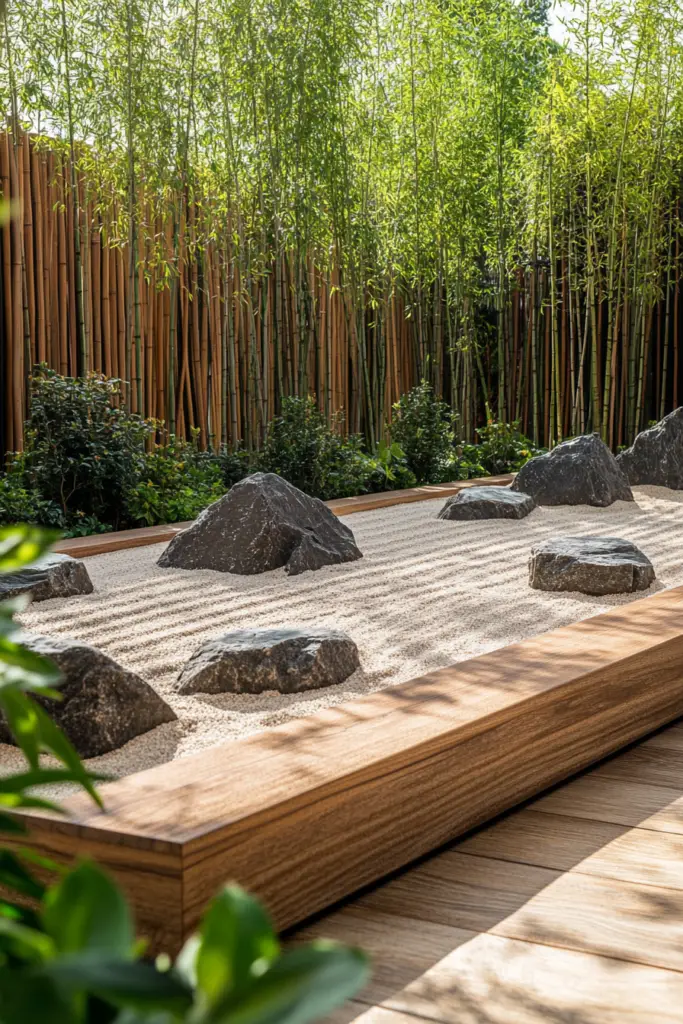
Designing Tips:
Build a raised bed using wood or stone to define the garden’s edges. Inside, arrange elements like raked sand, small rocks, and carefully chosen plants. The raised borders help separate each component, creating a neat, intentional design. Consider adding bamboo or gravel pathways for added balance.
Best Placement:
Raised bed Zen gardens work well in backyards or patios, offering a peaceful retreat that is distinctly separate from the rest of your outdoor area. The elevation adds dimension, making it an ideal choice for both small and large spaces.
Idea 8: Zen Garden with Meditation Area
A Zen garden with a dedicated meditation space provides a tranquil spot for mindfulness and reflection. This peaceful corner enhances the garden’s purpose of promoting calm and focus.
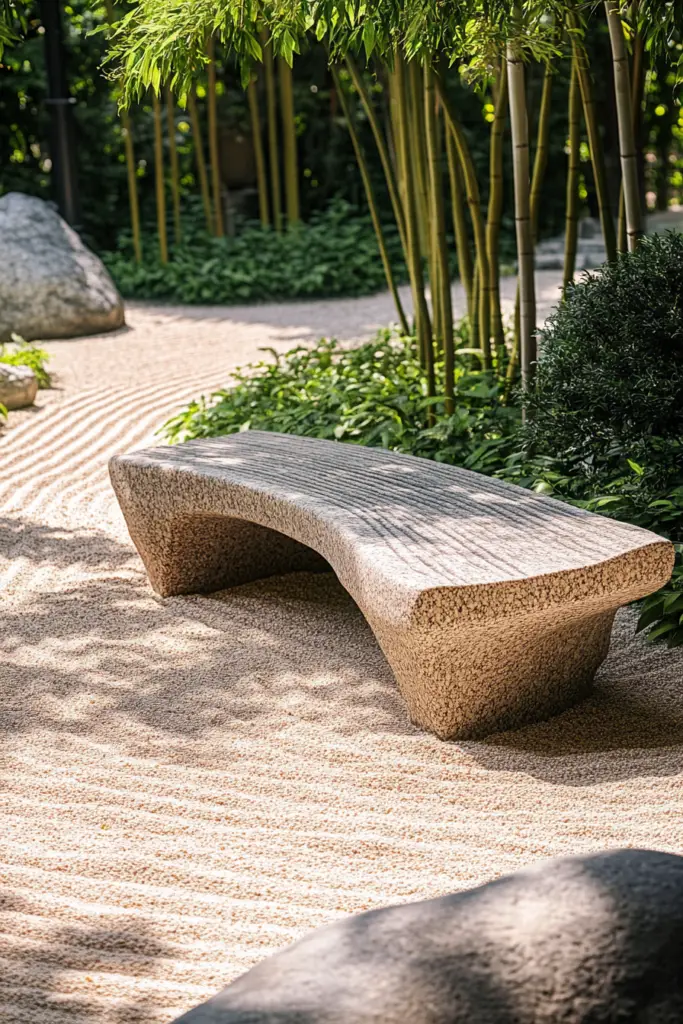
Designing Tips:
Create a simple meditation area by adding a bench, mat, or smooth stone platform as the focal point. Surround this space with calming elements like raked gravel, soft plants, or a small water feature. Choose a location that feels secluded and peaceful, ensuring privacy and quiet for your practice.
Benefits:
This setup offers an intentional space for meditation, helping you disconnect from distractions and deepen your mindfulness routine. It enhances the overall serenity of your Zen garden, turning it into a personal sanctuary for calm and inner reflection.
Conclusion
Zen gardens offer endless possibilities for bringing calm and balance into your home, whether through traditional rock gardens, minimalist succulent arrangements, or soothing water features. With so many styles and sizes, anyone can create a peaceful retreat that suits their space. Try experimenting with the ideas shared to design your own sanctuary of tranquility.
- 16 Funky Living Room Ideas to Bring Colors, Fun & Personality to Your Space - November 9, 2025
- 12 Small Bathroom Ideas on a Budget That Make Your Space Look Bigger & Stylish - November 6, 2025
- 20 Modern Boho Living Room Ideas That Are Cozy & Absolutely Stunning - November 2, 2025
